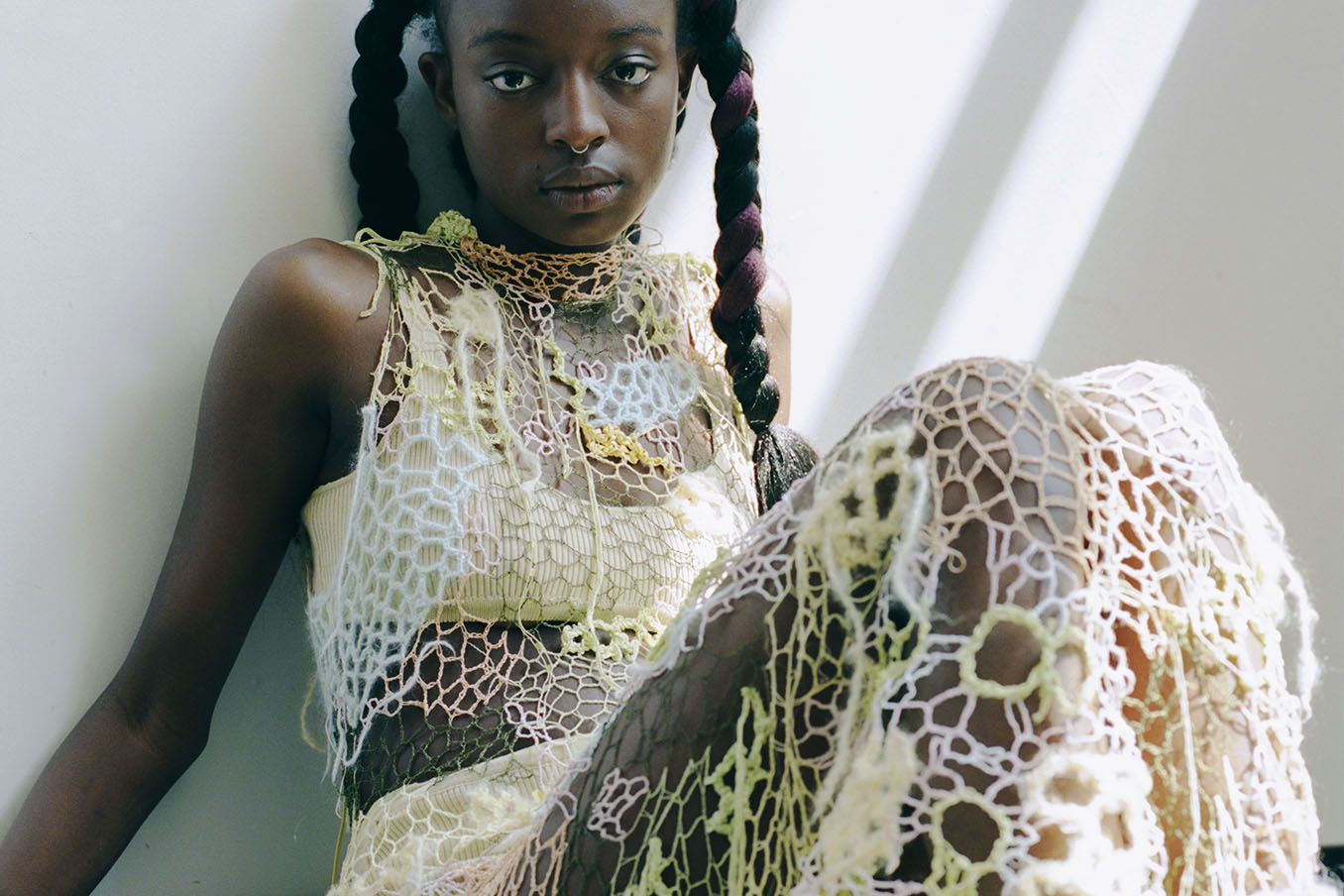Amidst industry-wide divestments from diversity, equity, and inclusion programs and cutting corners on sustainability, Copenhagen Fashion Week continues to stand firm by its values. How does the Scandinavian city’s fashion week affirm its social and environmental commitments while maintaining design influence as a fashion capital?
In January 2023, Copenhagen Fashion Week (CPHFW) implemented a “Sustainability Action Plan” which describes a set of minimum standards mandatory for all brands seeking to participate in its official calendar. The standards are based on EU’s legislation as well as the apparel and textile industry’s insights, regularly updating the benchmark for ethical practices. Some of the core requirements for brands include the detailed reporting and demonstrable reduction of the carbon footprint, implementation of circular design principles, and education of consumers on sustainable efforts in accordance with EU’s Green Claims criteria.
Another lesser known but no less impressive and impactful standard is that each brand on the CPHFW schedule has to sign the Danish Fashion Ethical Charter. This charter obliges each signee to promote inclusive and diverse body ideals, while backing the fair payment and health assessment of all models.
Each brand on the calendar has to be certified to engage in these business practices by a third party. All of the aforementioned is considered part of the minimum standard, illustrating just how deep and holistically the ethical values are anchored.
These details exemplify how CPHFW is distinct compared to the other big four fashion weeks. The sustainability framework is intrinsically rooted in a mindset connected not just to fashion but to Danish lifestyle more widely. Final Year Undergraduate in Fashion Business students experienced this thinking firsthand when they travelled there, this January, on occasion of CPHFW’s AW25 season.
As well as Scandinavian style, the region harbours a distinct interior design culture. FRAMA, a Danish design and self-care studio, works predominantly with natural wood, steel, and aluminium. Polimoda alumni and FRAMA PR, Paulina, explained that because the brand only uses natural materials, sustainability is implied. This gives them space to focus on cultivating their design and emotional values, knowing their end-consumer is aware of their ever-present environment standards. This creates a one-of-a-kind dynamic, resulting in equal weight given to design and sustainability.



Brand Heliot Emil operates its showroom and office atelier from just outside Copenhagen’s centre, in the city’s trendy Strøget neighborhood. The brand is known for its techwear that relies heavily on nylon, which Martina, PR and content for the brand, says is made from recycled fishnets, adding that they collaborate with companies to source dead stock fabrics, reducing the use of virgin fabrics and lowering any additional carbon footprint and environmental pollution in the production process. Martina emphasizes the importance of these sustainable processes, highlighting that they are essential for a contemporary brand today.
CPHFW is more than just another fashion week on the calendar. It is a showcase of how little ethics and environmentalism have to compromise design. But even Copenhagen is seeing the effects of a wider, industry-encompassing regression to the toxic standards of the early noughties.
Small talks – big conversations was a talk that brought together various entrepreneurs, designers, editors, and other industry insiders. Facilitated by Copenhagen Fashion Week and Vogue Business, the daily panel talks are open to the public and explore the pressing issues the industry faces. During one of the conversations, CPHFW’s CEO Cecilie Thorsmark mentioned that “significant developments on the runways in terms of representation” have been made since she first joined the fashion week in 2018. She was forthcoming in her opinion that, this season, more could have been done regarding inclusivity. The panelists, including casting director Emma Matell and Vogue Scandinavia’s first diversity, equity and inclusion editor Mona Mohammed Ali, agreed that wide financial decline has aided the return to conventional models as it helps secure sales.
While big brands can more easily embrace sustainability practises, emerging talent has an even tougher time. In another session of the talk format, Thorsmark emphasized that the mid market and emerging designers often do not have a lot of financial flexibility in the face of a downturn. How can sustainability be combined with such a revenue-growth focussed mentality? After all, is it not cheaper to rely on conventional materials and procedures?
Omoyemi Akerele, founder and director of Lagos Fashion Week, responded that sustainability has to remain on the agenda “because lives depend on it”; her answer referencing the recent fire in Kantamanto, Ghana’s greatest used clothing market. Camera Nazionale della Moda Italiana’s International New Talent brand ambassador Sara Sozzani Maino added: “We don’t all need to be activists, but we do need to be responsible”.
Cross-cultural persistence on values is what makes Copenhagen a fashion week with integrity at its heart. A place where the big players like GANNI and Rotate know their roles as the incubators of young designers. Programs like CPHFW’s NEWTALENT and Zalando’s Visionary Award celebrate rising stars, with the most recent beneficiary being the British brand Sinead O’Dwyer, known for its daring, body-positive designs. Even for brands outside the “emerging bubble” there is strong support provided by the Danish capital’s fashion week. Its network is defined by a high degree of accessibility and mutual backing, where the access to a majority of events is rarely restricted.
This democratic approach to fashion instinctively plays into the idiosyncrasy of the Nordic fashion capital. With few barriers, the fashion week almost challenges you to attend as many events as possible while elsewhere the industry prides itself on exclusivity, reserving access and show-notes to those who can directly promote brands.
At CPHFW, the symbiosis between the audience and the brands can only be characterized by a genuine interest in each other. Visitors appreciate the familiar, welcoming atmosphere while the brands can be certain their designs are visible while being held to enforced sustainability and ethical standards.
The success of this business model can also be measured by its effectiveness outside the nordic bubble. After all, a collective approach is necessary for actual, lasting industry change. With the adoption of Copenhagen Fashion Week’s sustainability requirements by the British Fashion Council, there is a spirit of optimism. Starting from this year, British Fashion Council’s emerging talent program NEWGEN, will be the first to apply minimum sustainability standards, with full implementation for all participants on the official calendar by 2026. As an impactful member of the big four, London Fashion Week’s collaboration with Copenhagen sends a powerful message across the board. Now all that remains to be seen is if the other fashion weeks follow suit.
Credits
Written by:
Photos:
- Xasan Xabibullayev, Undergraduate in Fashion Business
Websites:
- Copenhagen Fashion Week (n.d.) Sustainability requirements.
- Copenhagen Fashion Week (2025, January 13) The British Fashion Council Adopts CPHFW’s Sustainability Requirements.
Books:
- Sark, K. (2023). Copenhagen Chic: A Locational History of Copenhagen Fashion. Intellect (UK).


